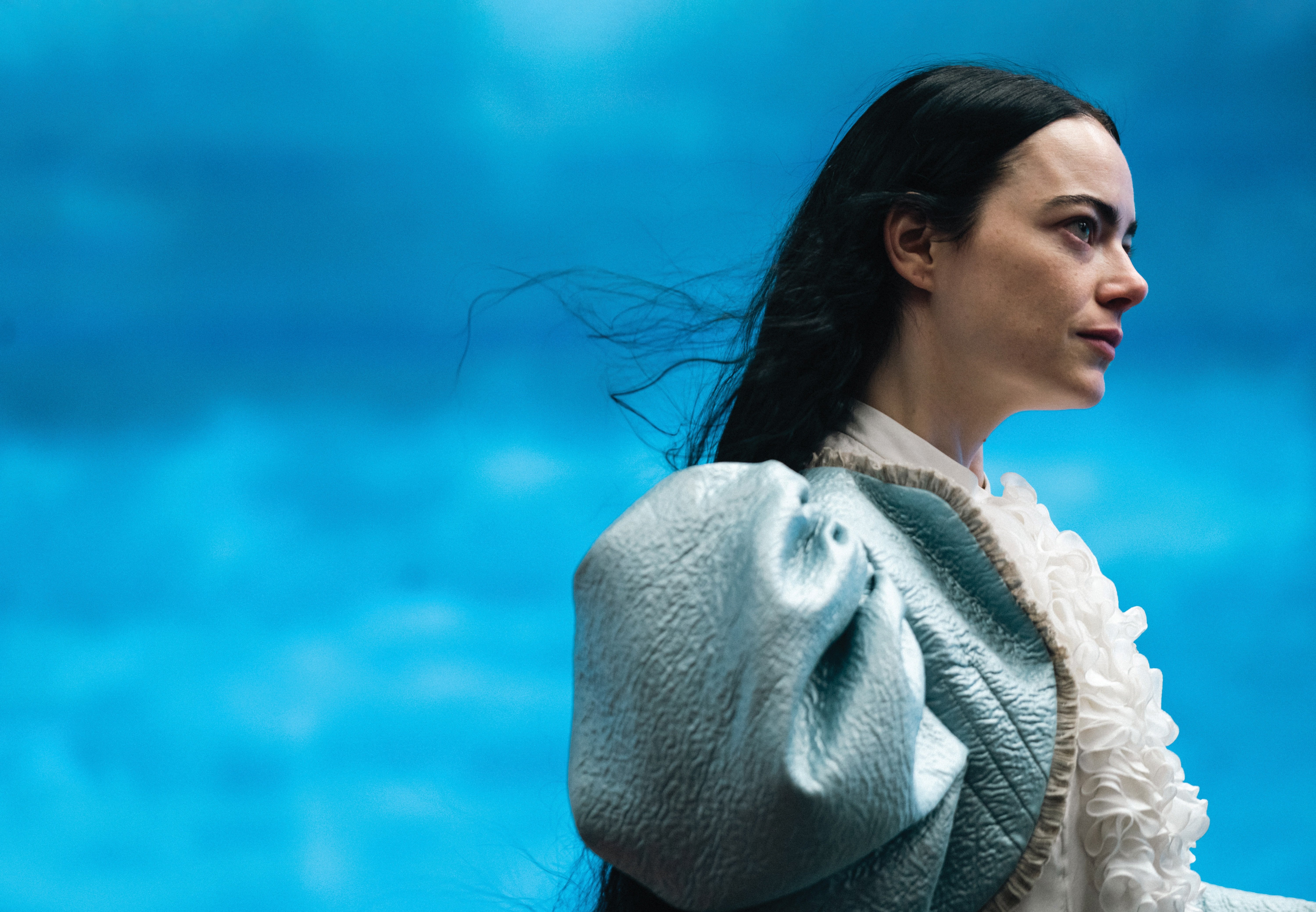
Life Anew: Poor Things
Robbie Ryan, BSC, ISC and director Yorgos Lanthimos maintain their intuitive methodology on a grand-scale production.
Photos by Atsushi Nishijima and Attila Szűcs, courtesy of Searchlight Pictures
Poor Things cinematographer Robbie Ryan, BSC, ISC and director Yorgos Lanthimos have a partnership steeped in experimentation with optics, angles and film stocks. Their first feature collaboration was The Favourite (AC Dec. ’19), a location shoot crafted with unusually wide-angle photography and natural light. They continued to experiment on their latest effort — this time within the context of a fantastical atmosphere created almost entirely onstage at Origo and Korda Studios in Hungary.
“Yorgos had a very specific vision for Poor Things,” Ryan says. “He wanted this to be a fantasy world. It was a bit of a learning curve for both of us. Yorgos hadn’t worked extensively in a studio environment before, and I was continuously adapting to the grand scale of the project. We took the same minimalist approach that we took with The Favourite, making use of a single camera and simple equipment. Our experience with lower-budget filmmaking really served us well.”
“It’s crucial not to choose a style just for the sake of it; it must resonate with the story.”
— director Yorgos Lanthimos
New Terrain
Poor Things is a playful patchwork of Alasdair Gray’s satirical 1992 novel of the same name, Victorian horror and snippets of fairy tales. Bella Baxter (Emma Stone) possesses an adult body and the mind of a child, thanks to her surrogate father, Dr. Godwin Baxter (Willem Dafoe), a Frankenstein-ian scientist who has created Bella in his lab by reanimating a drowned pregnant woman and replacing her brain with that of the unborn infant.
The reanimation process accelerates Bella’s mental development, and soon she pines for a world beyond the plush confines of Baxter’s London townhouse. A fling in Lisbon with the comically arrogant dandy Duncan Wedderburn (Mark Ruffalo) leads to an unscheduled absconsion to Alexandria, a marooning in Marseilles, and a stint at Madame Swiney’s bordello in Paris. When Bella finally returns home, she possesses the personal experience and assurance of a fully formed individual.
The fanciful Victorian milieu was new terrain for Ryan, who has leaned into naturalism and location-based shooting throughout his career, which includes his work on the features American Honey, Marriage Story, Slow West, Philomena and Fish Tank. Ryan joined Poor Things shortly after production designers Shona Heath and James Price began their work. By then, he notes, they were “already flying.

Testing Ideas
Between April and the start of production in late September 2021, Ryan conducted tests with Lanthimos in London to evaluate lenses and film stocks with early costume and production-design elements. “Testing provides an invaluable insight into Yorgos’ thought process,” the cinematographer says.
Lanthimos also gave Ryan a list of films for visual inspiration. Chief among them was Francis Ford Coppola’s 1992 feature Bram Stoker’s Dracula, shot by Michael Ballhaus, ASC, BVK (AC Nov. ’92) — particularly for its use of special-effects techniques that recall early cinema.
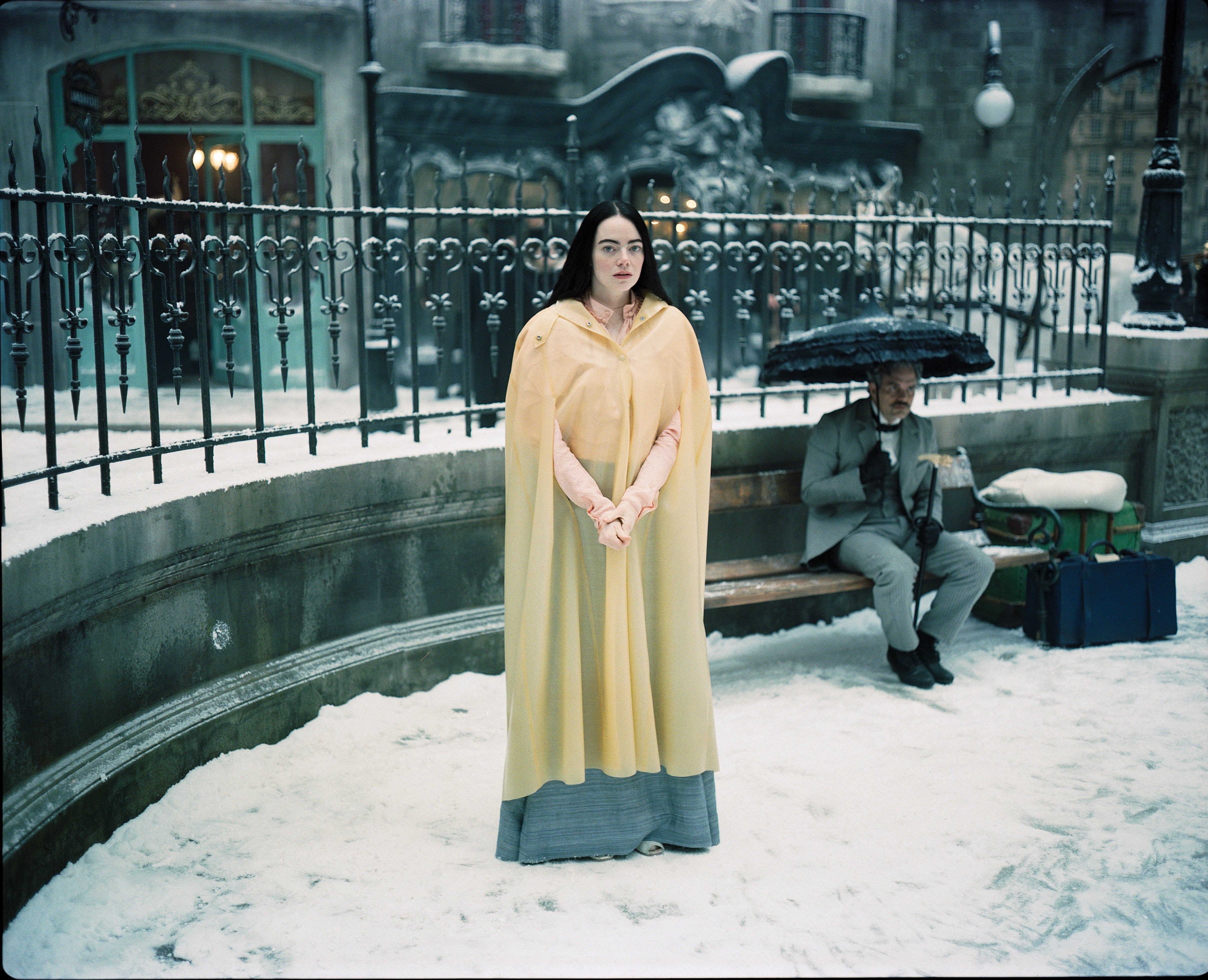
Onstage in Budapest
The production worked primarily out of Origo Studios in Budapest. One set, the Lisbon hotel square and harbor, was filmed at Korda Studios, and the filmmakers also made use of a handful of nearby locations.
Ryan scouted each set virtually, using scale 3D models built in Unreal Engine by concept artists Jonas Bethge and Antonio Niculae. “The program allowed us to view their designs in real time and make changes as needed,” says Ryan. “Once Yorgos approved the design, it became the template for the physical sets.”
Some stage-set exteriors made use of static backdrops or, in the case of a cruise ship at sea, a 197'x33' LED volume of CG-animated water and sky plates provided by London VFX facility Union. To photograph these sets in the way he and Yorgos were accustomed to, Ryan enlisted gaffers Andy Cole and Gromek Molnár to light each one as if it were a natural environment. The Lisbon harbor, with its open-air café, was the largest. “The task was complex, and we had to be ahead of the game with our pre-rigging,” says Ryan.
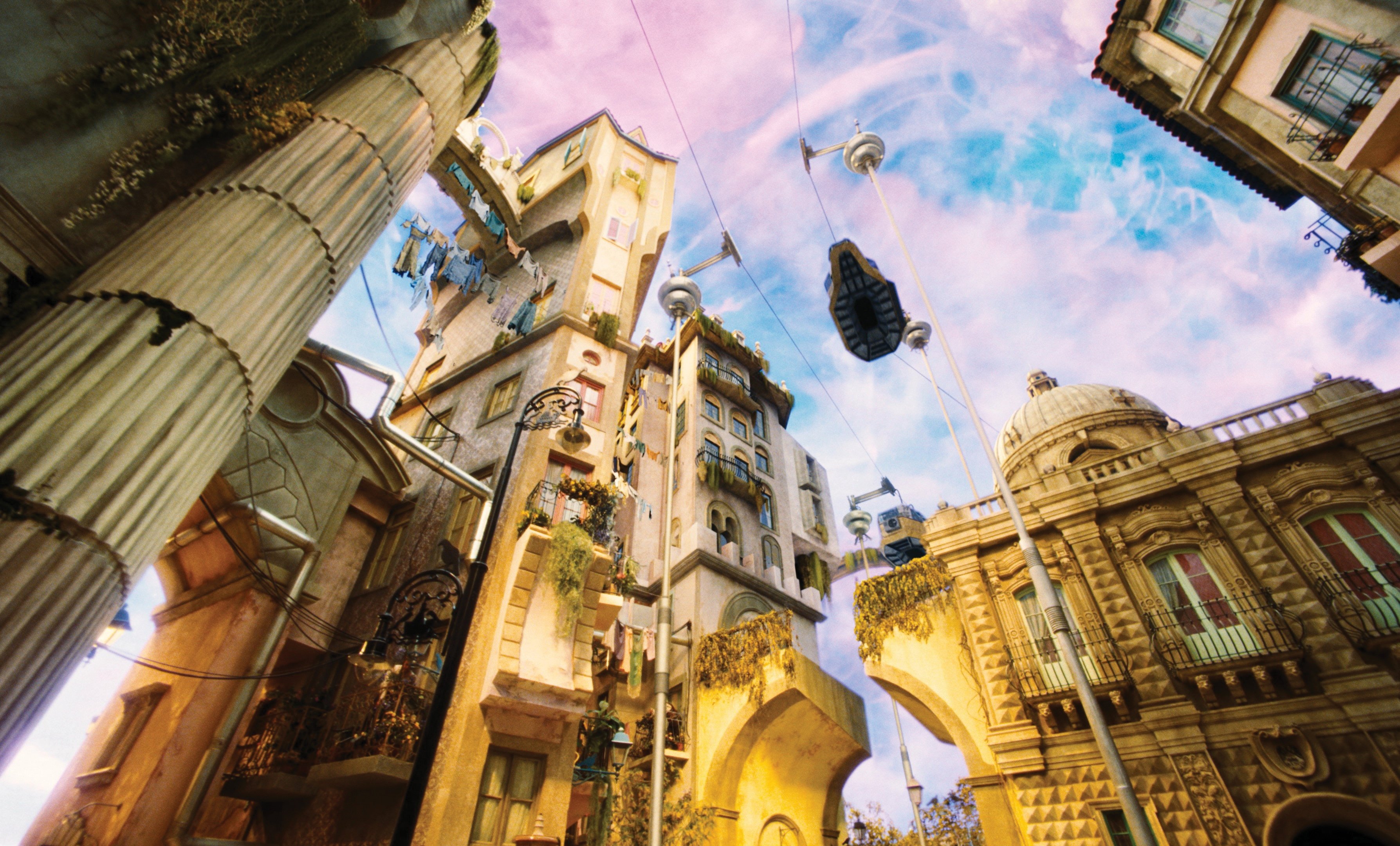
“The first step is to create a sky,” Cole explains. “For Lisbon, which has a sunny climate, we needed powerful lighting to mimic the sun.” Ambient daylight came from Arri SkyPanel S60s covered with half silk in 20'x20' and 40'x40' light boxes.
The harbor’s immense painted backdrop (created by scenic artist Steve Mitchell) — which would be front lit — proved a challenge for Ryan, who initially wasn’t sure whether the equipment on hand would evenly illuminate such a large surface. “We deployed around 80 SkyPanels from the top and doubled up [with another 80] on the bottom to ensure a sufficient exposure,” Cole says, “but it wasn’t just a matter of quantity. We had to be strategic about the placement, so we positioned another row farther away to target the middle of the backdrop. All told, there were more than 800 S60s on that stage.”

In an effort to keep the set clear of anything that might inhibit the filmmakers’ freedom of movement, rigging gaffers Ádám Stankovits and Attila Bilik hung a row of 24 24K Dino lights and another of 26 12K Dinos high above the backdrop and directed them toward the harbor, along with 1/4 Wendy lights for street scenes and height-adjustable Arrimax 18Ks through 1/2 CTS for skipping off the ground and walls of the café. The primary difference between the Dinos and Wendys, Cole notes, is that “a Dino has a wider spread, and a Wendy has a more powerful, focused throw.” He adds that “the blend of tungsten and daylight proved to be quite effective when it all hit the intended target.”
An Evolving Palette
Bella’s arrival in Lisbon marks a new life for her, resplendent in vivid color — a dramatic visual shift from her sheltered, monochromatic existence back home. Ryan shot the black-and-white sequences on Eastman Double-X 5222. “Yorgos prefers more contrast in the black-and-white scenes, which calls for harder light,” he notes.
“Even with the hard shadows and bright highlights, the result is usually pleasing on the actors’ faces and on the set. For color, I’m partial to using Lee Half Soft Frost on a frame, and I also use Silent Grid Cloth in the usual Quarter, Half and Full densities. For black-and-white, we often just removed [any diffusion] entirely.”

This boldness for the black-and-white sections was easier to achieve with exteriors. “Indoors, getting the lighting equipment into the right position without it appearing in the frame became a challenge, because we didn’t want to see lighting equipment in the 8mm lens, which shows everything on the set,” says Ryan. Adds Cole, “Because we were lighting from the outside, and very rarely had [any fixtures] on the floor, trying to keep the exterior [lights] out of shot — while at the same time having enough light coming into the set — was a challenge.”
Many of the black-and-white scenes take place in Baxter’s house. For these interior shots, in particular those that feature views of the exterior through the windows, Ryan used condors to boom 18K Arrimax Fresnels over the backlot sets, which included the house with a cobblestone street in the front and a walled yard in the back.
Ryan contrasts this approach with the one he used for a scene in which Bella, Godwin and their humble assistant Max McCandles (Ramy Youssef) go for a daytime walk in the park. “I was getting more daring by then,” he recalls. “Since it was an exterior scene and the weather was favorable, we had the opportunity to bring in bigger lights closer to the action to achieve that well-lit black-and-white look.”
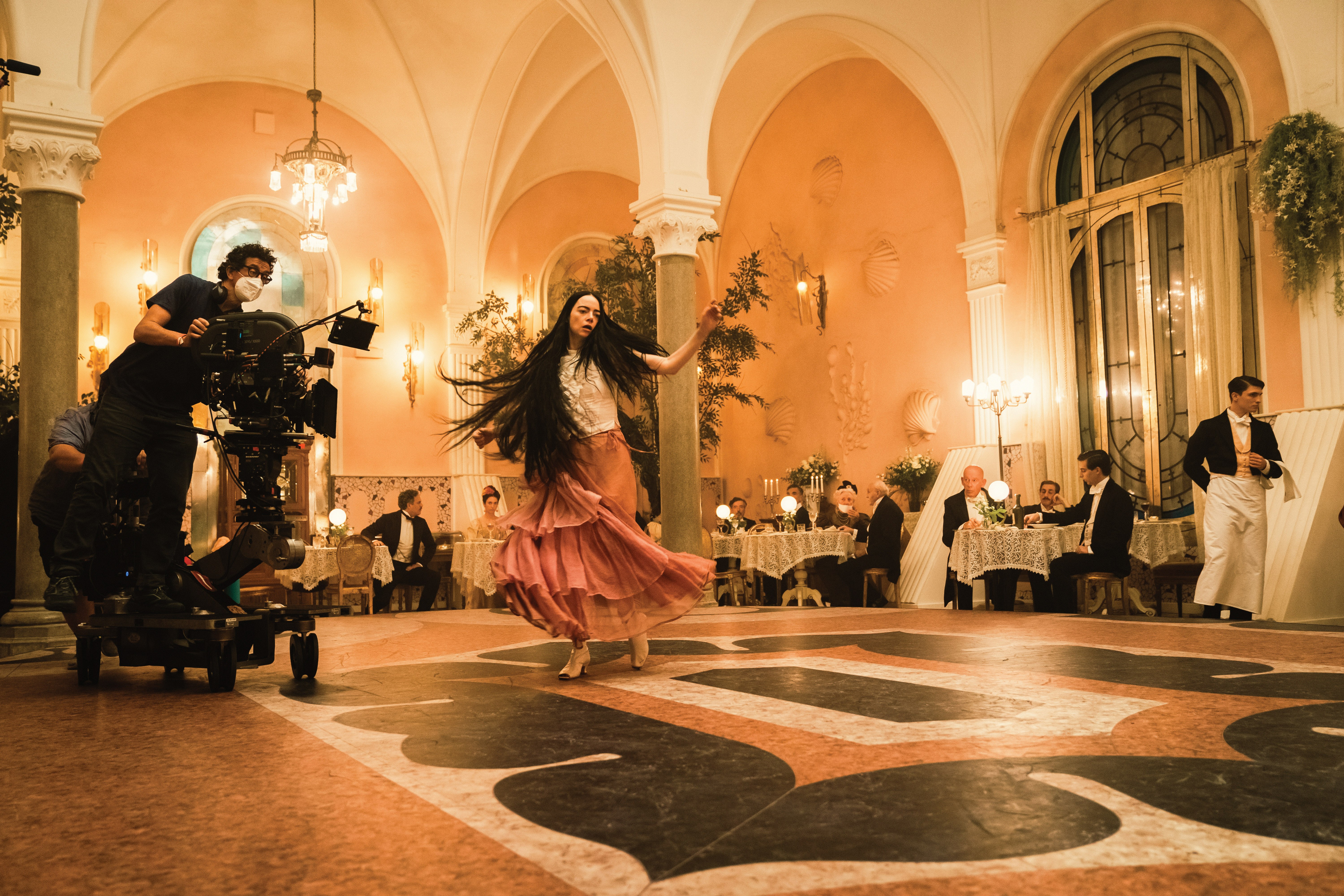
Reanimating Ektachrome
Ryan filmed color sequences on Kodak Vision3 500T 5219 and a limited run of 35mm color-reversal based on Kodak’s Ektachrome 100D 5294.
“Yorgos had learned that Marcell Rév [ASC, HCA], who shot Euphoria [AC Aug. ’22], managed to get Kodak to produce a 35mm run of Ektachrome,” says Ryan. “We were fortunate enough to find a lab, Andec Cinegrell Filmtechnik in Berlin, that could perform the E-6 process on 35mm motion-picture film. They were not used to handling large projects like ours, but our line producer, Kasia Malipan, helped them deliver what we needed, and the results were astounding.”

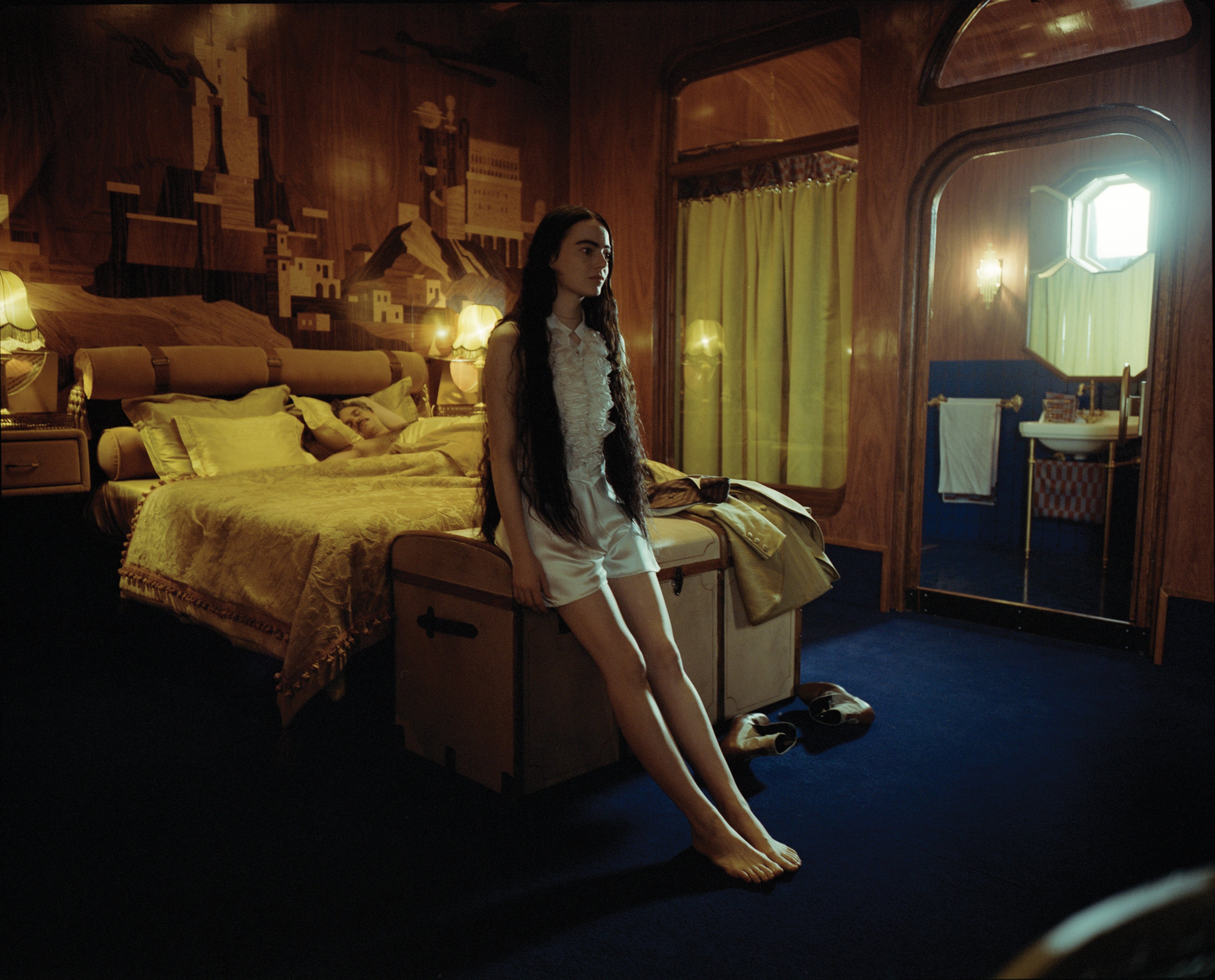
Ryan estimates that he shot 25 percent of Poor Things on Ektachrome, including the opening shot, the exteriors in Lisbon and on the cruise ship, and the sequence depicting Bella’s reanimation. He shot the rest of the color material on 5219, which was processed along with the 5222 at the National Film Institute Filmlab in Hungary. Dailies were graded by Benedek Kabán, and the final grade was performed by Greg Fisher at Company 3 in London.
From Arricam to VistaVision
Ryan’s camera of choice for Poor Things was Arri’s Arricam ST, which he calls “our workhorse for the 35mm format,” particularly for its HD-IVS video tap and top-mounted magazine. He sometimes used an Arricam LT as a second camera.
Harking back to cinema’s early days, Poor Things is framed in 1.66:1, and Ryan reports that Lanthimos was initially keen to shoot some sequences with an 8-perf Beaumont “Beaucam” VistaVision camera, but the only available camera had a modified Arri IIC motor that proved too noisy for dialogue scenes. The filmmakers ended up deploying the camera — paired with adapted Leica APO Summicron-R and Telyt-R lenses — exclusively on Bella’s reanimation sequence, which featured only voiceover. “Both the camera and lens package for the VistaVision Beaucam came from Geo Film in California,” says A-camera 1st AC Olga Abramson. “The lenses [ranged] from 19mm to 135mm.”
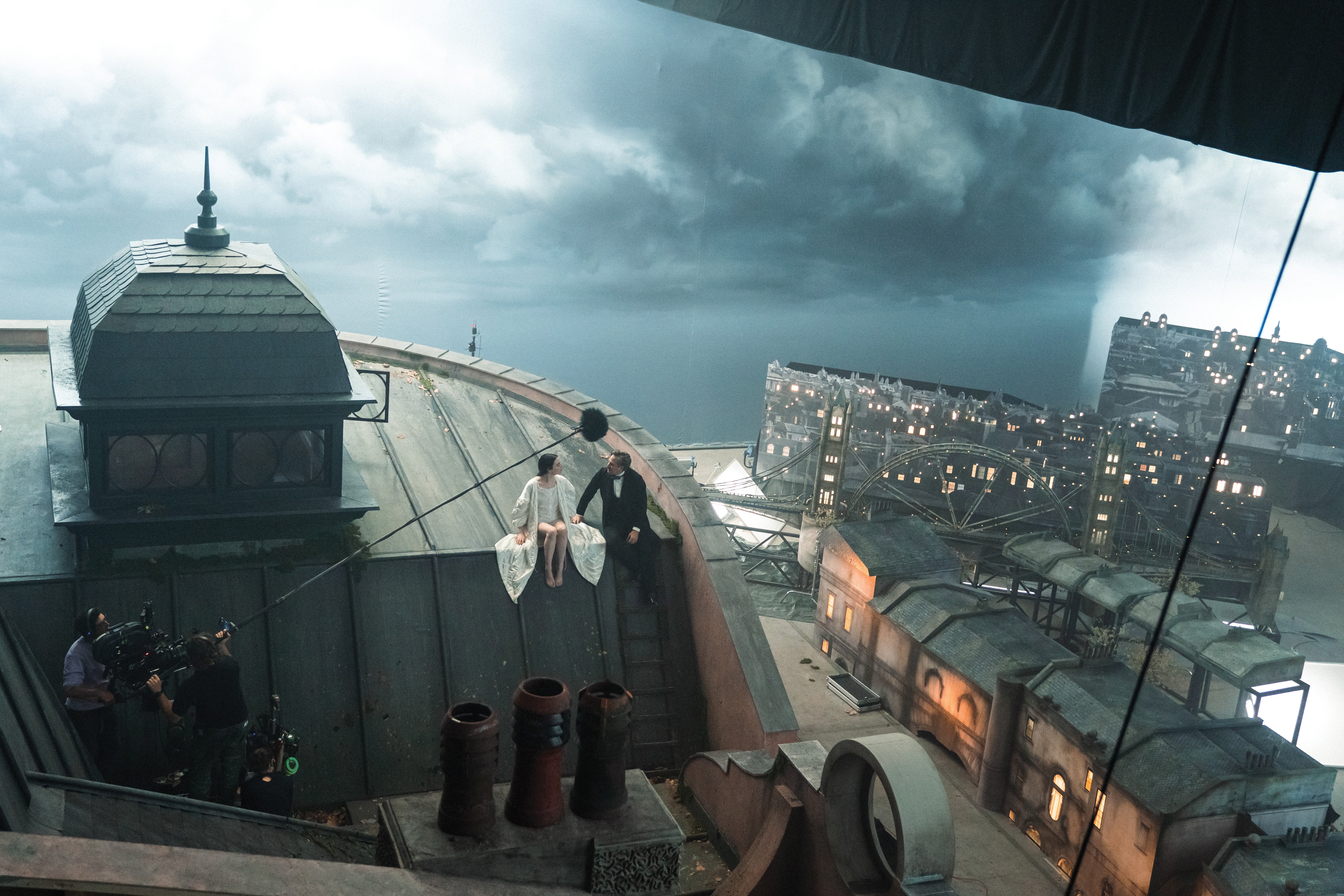
Says Ryan, “While it was technically challenging to shoot, the reanimation is one of my favorite scenes to watch. It has nods to the classic Frankenstein films. With the back-and-forth between black-and-white and Ektachrome, the bombastic soundtrack, and the use of VistaVision, it all seems kind of mental, but the film is really chugging along at that point.”
A Lucky Mistake
One technical challenge was related to the Beaucam’s power supply, which required separate sources for the motor and accessories, including Abramson’s Light Ranger focus assist and other Preston controls, and an AJA HD10A-Plus HD/SD analog-to-digital converter for the camera’s video tap. This configuration led to a “lucky mistake” at the moment when Bella opens her eyes for the first time. Ryan recalls, “The camera’s battery started to drain, slightly slowing the frame rate, and when the shot is played back at 24 frames per second, her eyes snap open in this inhuman sort of way.”
“Unlike an Arricam, which has a digital voltage readout, the Beaucam doesn’t provide real-time power monitoring,” notes Abramson. “We got caught up in the moment and neglected to swap out the camera battery. Technically, it was an oversight, but creatively, it resulted in this wonderful moment.”
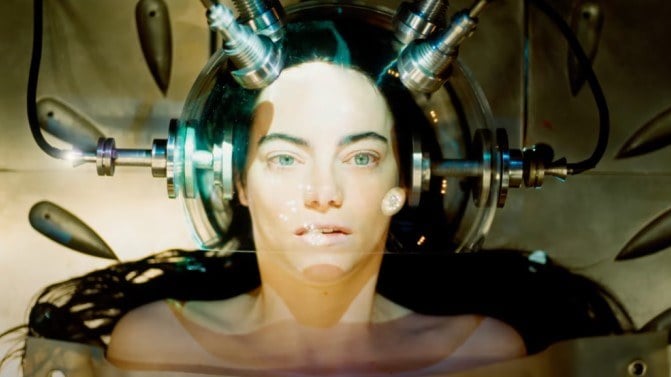
An Array of Optics
Ryan and Lanthimos applied a variety of lens types to the filming of Poor Things. Through extensive testing facilitated by Manfred Jahn at Arri Rental Munich, they narrowed their choices to three: portrait lenses, wide-angle lenses and zoom lenses. “The portrait lenses were 58mm and 85mm [Lomography] Petzvals, which are known for their distinct bokeh, where the center is sharp and everything else spirals out of focus,” Ryan says. Rehoused in a cine-style aluminum chassis by True Lens Services Limited in Leicester, U.K., these two primes were tuned to the filmmakers’ specs and shot at the widest apertures — T2.1 on the 58mm and T2.3 on the 85mm — to produce a visually striking, era-appropriate look for singles and close-ups.
The 35mm-format wide-angle lenses included a 10mm T2.1 Arri/ Zeiss Ultra Prime and an 8mm Oppenheimer/Nikkor, which Ryan describes as having “a distinct bend” that is particularly evident in the surgical theater where Baxter’s medical students observe his warped dissections from behind a curved railing that’s been optically twisted into a wave. “That shot is all Yorgos,” Ryan notes. “He knows when to use a particular lens for a specific effect and often sets up the shots himself before showing them to me. I find myself constantly trying to catch up with him. He’s very much a cinematographer in his own right.”
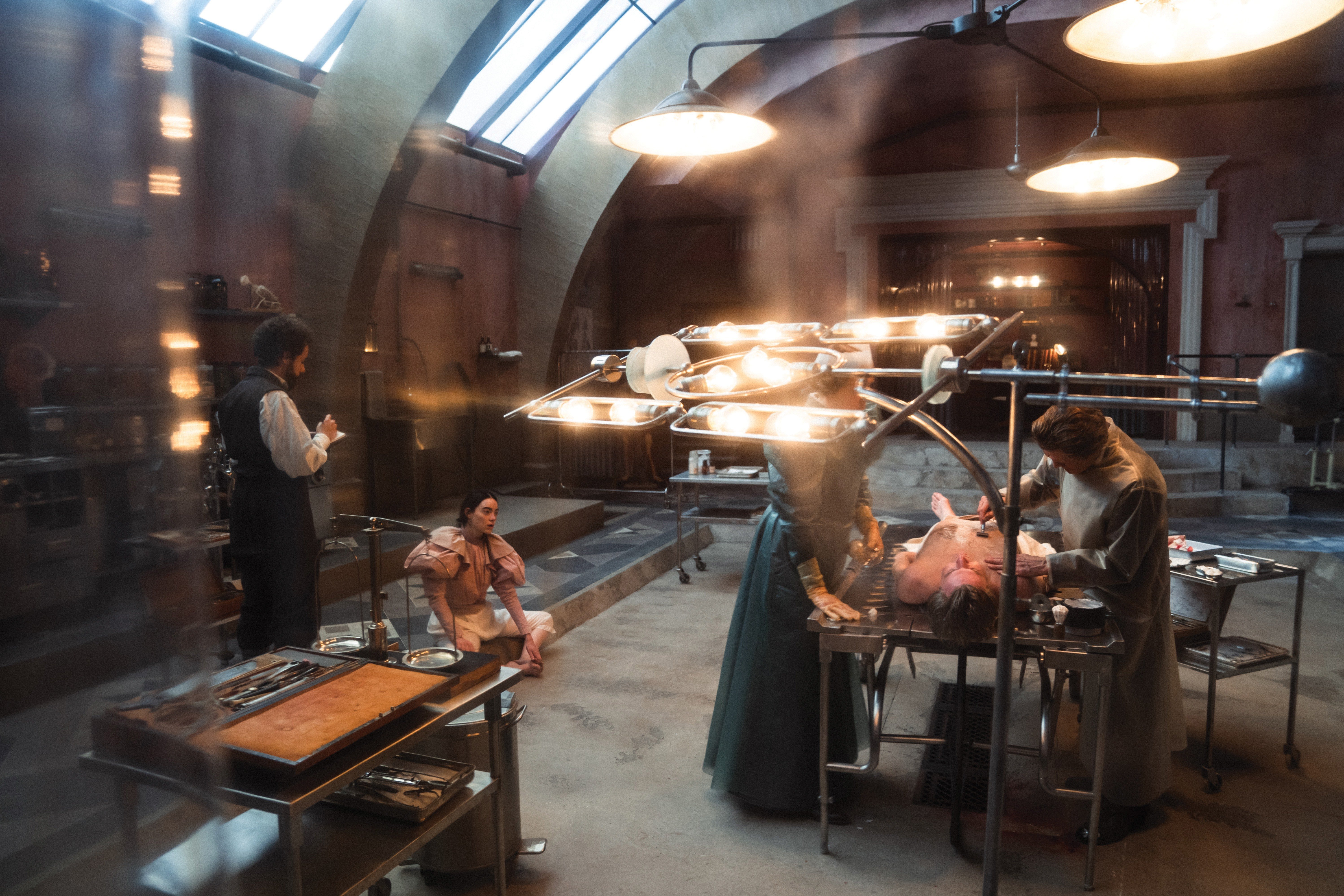
For certain moments, Lanthimos wanted to achieve a vignetted “porthole” effect reminiscent of early photography, so Ryan suggested using a 4mm T2 OpTex Super Cine — a Super 16 lens — on the Arricam ST. “He was quite pleased with the result,” the cinematographer reports. “It captures a broad view without too much distortion and has a nice flare at certain angles.”
Abramson found working with the OpTex lens memorable for two reasons: “You can’t simply put that lens on a 35mm camera, because you’ll hit the shutter. Manfred took a diagonal slice off the back of the lens to align it with the angle of the camera’s mirror, so we could mount it to the camera.
“Here’s where it gets a bit peculiar,” she continues. “It doesn’t actually have a focus barrel.” The lens has a fixed focus, which, due to the extreme short focal length, allows depth of field to hold focus from about 1' to infinity. “It made for some interesting moments on set when we’d shoot a scene on the 4mm, then switch to one of the zooms. The dynamic shifted drastically from me being relatively relaxed to suddenly firing on all cylinders!”
“The major difference in lenses between The Favourite and this film was our use of zooms,” says Ryan. “Yorgos wanted a zoom that ranged from 10mm to 180mm, which doesn’t exist. Eventually, we decided on the Arri/Zeiss Master Zoom 16.5-110mm [T2.6], and we also used an Angénieux Optimo 24-290mm [T2.8] for some shots.”
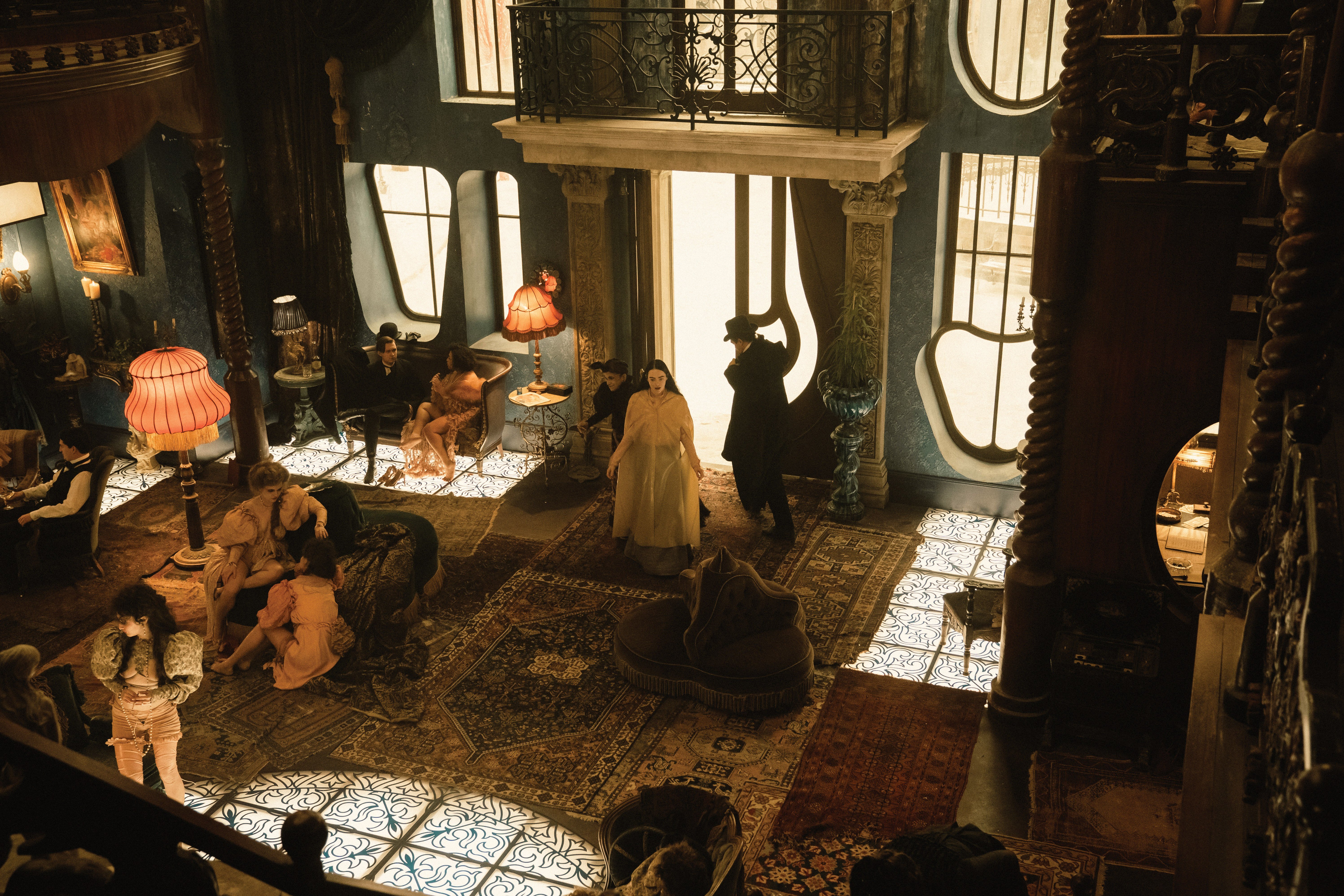
An Intuitive Approach
The filmmakers endeavored to use one of each lens type in every scene. A take of the entire scene was done for each lens from different angles, typically starting with a wide dolly setup before switching to something closer. “Yorgos’ approach was very intuitive,” Ryan recalls. “We didn’t work off any storyboards or shot lists. If a scene felt like it was lacking something, we’d often switch to the 4mm lens, which always seemed to provide what was missing.”
All of the sets were built to realistic dimensions with realistic materials, with small but significant concessions for technical purposes — like doorways without thresholds, to avoid issues with the dolly wheels. Wood floors, however — such as those in Baxter’s house — were built like real wood floors, bumps and all. “Fortunately, the wide-angle and fisheye lenses helped mask any bumpiness when we were off the tracks,” says key grip Attila Szűcs, who also acted as the dolly grip. “When we used the OpTex 4mm, you wouldn’t notice any at all.”
The unique qualities of each lens also dictated a particular approach to camera moves. The 8mm fisheye, which was too wide to hide dolly track and sometimes the dolly itself, required Ryan and Szűcs to contort themselves out of its field of view.
Subjective Camerawork
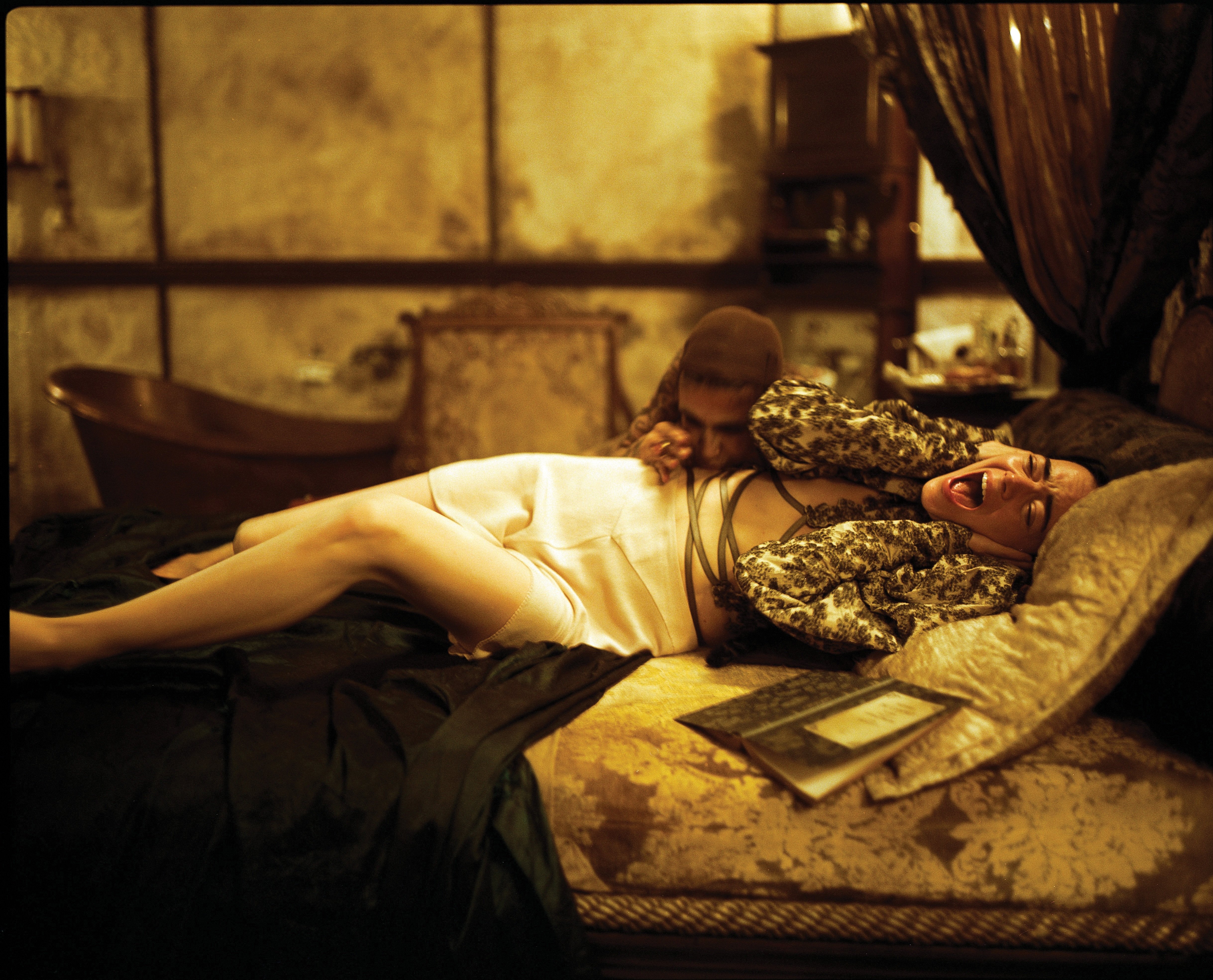
Camera movement plays an important role in conveying Bella’s physical and mental development. Szűcs notes, “Yorgos’ vision for the visual language of the film centers around Bella, so we had to resist the instinct to follow other characters, even when those characters were speaking or doing something important.
“In the first third of the film, we follow Bella closely, capturing her in a more chaotic and dynamic manner,” he continues. “As her character develops, our camerawork becomes smoother.”
As usual, Ryan served as the A-camera operator, preferring an OConnor 2575 fluid head on a Chapman Super PeeWee IV+ or the end of a Giraffe Compact Crane. The B camera was operated by Hungarian cinematographer György Réder.
“I don’t know any other way to work besides being on the camera,” says Ryan. “Conveniently for me, Yorgos has a way of shooting where everything revolves around the camera.”
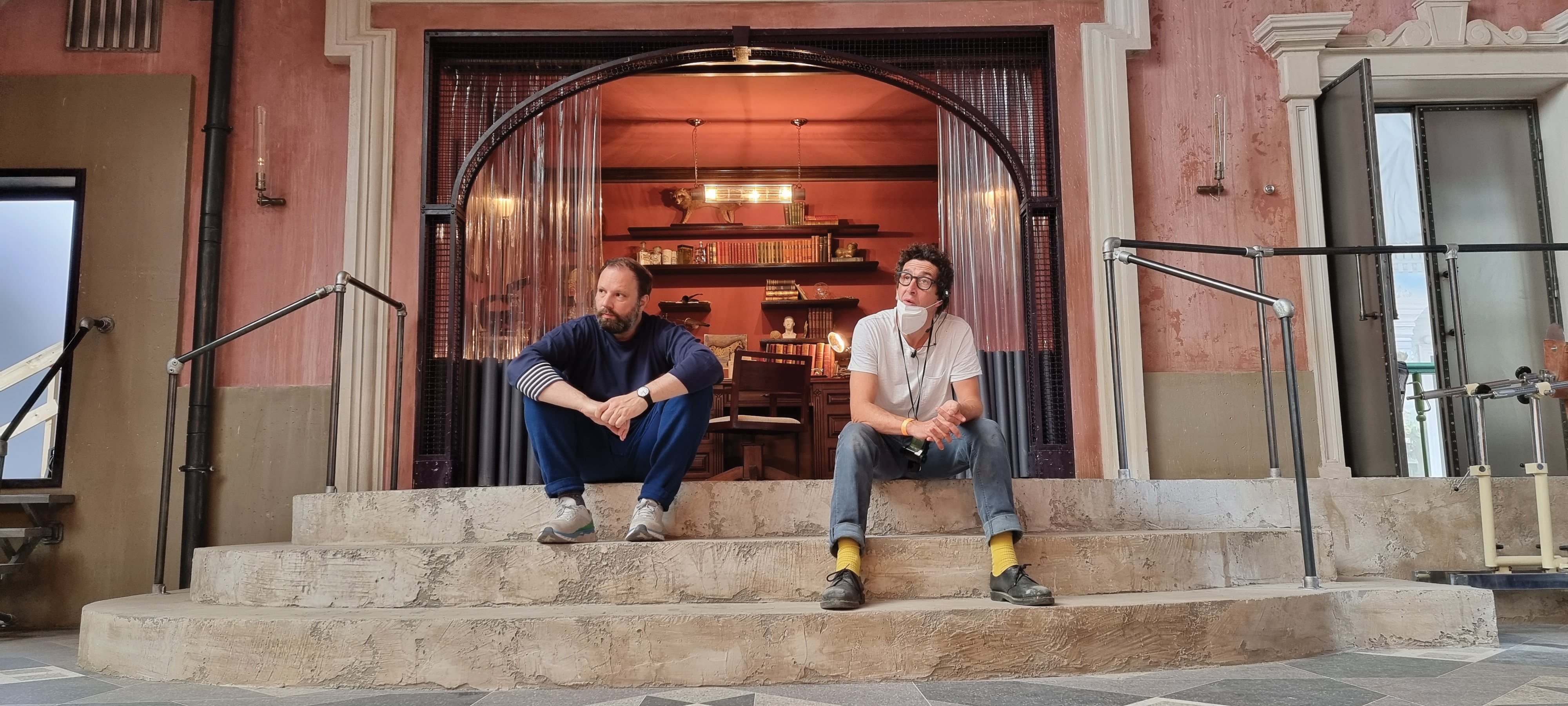
Tech Specs
1.66:1
Cameras | Arricam ST, LT; Beaumont “Beaucam”
Lenses | Lomography Petzval (rehoused by TLS); Leica APO Summicron-R, Telyt-R; Arri/Zeiss Ultra Prime, Master Zoom; Oppenheimer/Nikkor; OpTex Super Cine; Angénieux Optimo zoom
Film Stocks | Kodak Vision3 500T 5219, Eastman Double-X 5222, Ektachrome 100D 5294
“Style Must Resonate With the Story”
Writer-director Yorgos Lanthimos tells AC why Robbie Ryan, BSC, ISC is a favorite collaborator, how they approached their biggest production to date, and how their aesthetic and technical choices enliven their work.
Interview by Iain Marcks
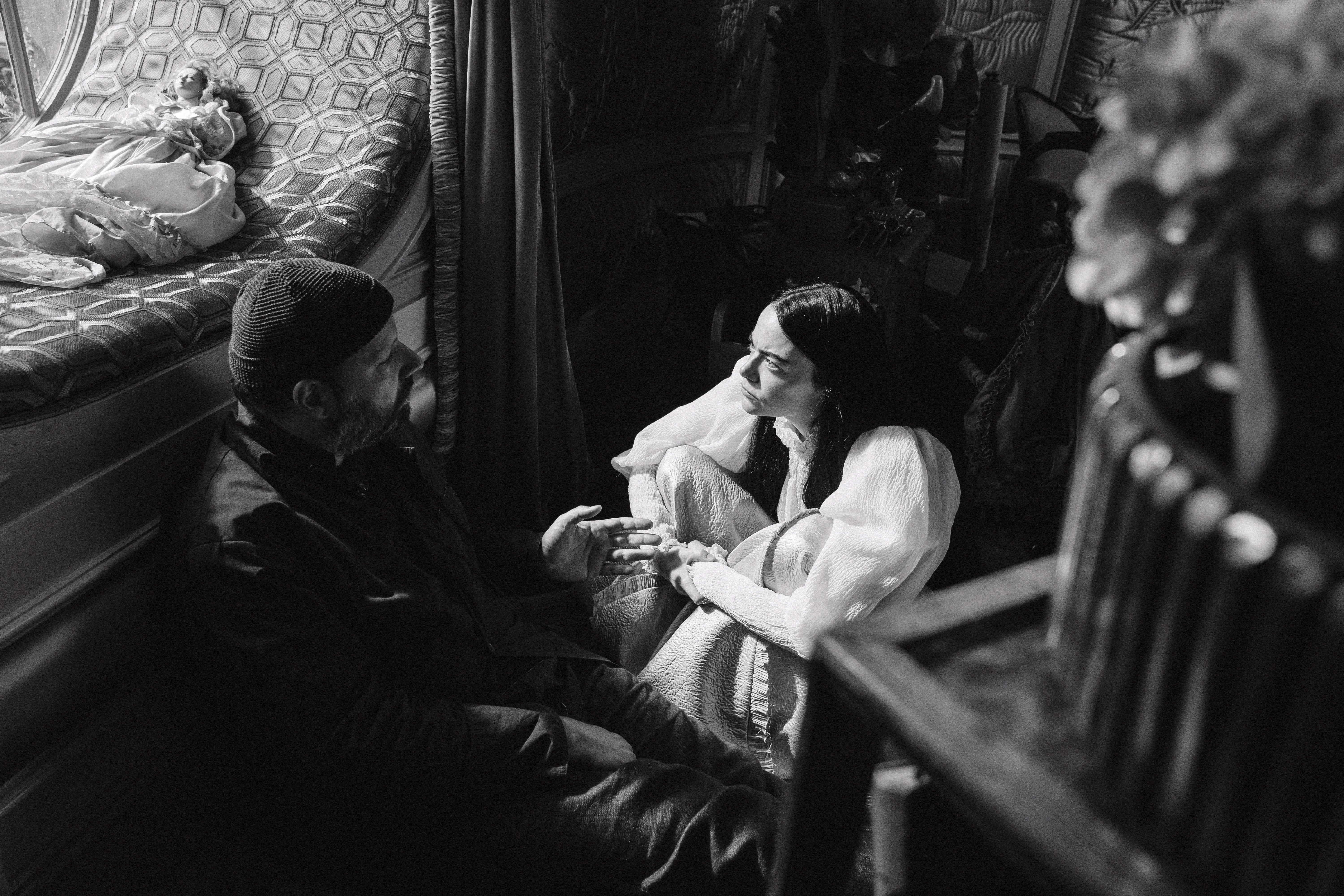
How would you describe your creative partnership with Robbie Ryan?
It’s like with many people I work with more than once: It’s about getting along, being comfortable with each other, having similar taste, and being able to communicate easily. It’s a two-way communication that’s easygoing. It’s a pleasure working with Robbie, where I never have to second-guess our decisions.
In general, do you prefer long-term partnerships over engaging new collaborators?
I think both are quite important. Working with people more than once allows us to build a relationship and progress together — but sometimes, new voices and different inputs are needed, especially if the project is quite different. Infusing the creative process with new people is also beneficial.
Robbie said your respective and shared experiences on lower-budget films prepared you well for Poor Things. Do you agree?
For me, it was more about maintaining our approach to filmmaking despite the larger scale, bigger budget and shooting in a studio with extensive lighting setups, which was new for us. Before, all of my films have been [done with] just natural light. We managed to keep the intimate and personal atmosphere we’re used to; we kept on-set personnel to a minimum, sometimes even rigging mics to avoid having a boom operator in the room. This maintained intimacy despite the change in scale.
Why do you prefer shooting film?
Shooting on film, to me, looks better as an end product, and I much prefer the process of shooting on film. There’s a sense of freedom and attention to detail during shooting, and the surprises during development are mostly positive. Film already has a personality and look, making the editing process more about refinement than creation from scratch. I’ve shot digitally but prefer film; I just find it more pleasing.
What motivated your choice to shoot black-and-white and Ektachrome?
We ended up shooting more black-and-white than initially planned due to how well it looked on the sets and costumes during tests. The contrast between black-and-white for Bella’s early journey and color for her later journey, especially in London, was striking. As for Ektachrome, we used it strategically due to its lighting requirements, [and] mostly for exterior scenes, though [those were] shot in the studio. The challenge was to harmonize the color-negative footage with Ektachrome’s contrast and color saturation in postproduction, as the differences were significant.
What was the rationale for using VistaVision for Bella’s reanimation scene?
We were drawn to VistaVision for its depth and larger format, which I’m keen to explore further. Unfortunately, the limited availability of cameras made it challenging to use extensively. VistaVision creates an incredible depth that suits certain scenes beautifully, so it made sense to reserve it for the reanimation. If we can access the right equipment to cover all situations, I’d love to delve deeper into this format in future projects.
How did your choice of lenses contribute to telling the story?
Significantly. We built large sets and used wide-angle lenses, which sometimes captured the studio ceiling and lights, necessitating postproduction work. This approach helped create small figures within a massive, slightly artificial world. It was essential to convey the world through Bella’s unique perspective, [to make] it feel handcrafted and a bit removed from reality. Lens choices, camera movement and set design all contributed to creating this distinctive world.
Robbie described your lens choices and format choices as more than just intellectual or technical decisions — he said they excite you creatively.
These choices operate on two levels: Intellectually, you consider the story and theme, seeking the best stylistic fit, but there’s also a personal desire to be excited by the process, to try new things and explore different filmmaking methods. It’s crucial not to choose a style just for the sake of it; it must resonate with the story. However, exploring and testing new techniques can lead to unexpected fits for your story. This excitement and discovery are vital for keeping everyone engaged and add another layer to the intellectual aspect of filmmaking.






